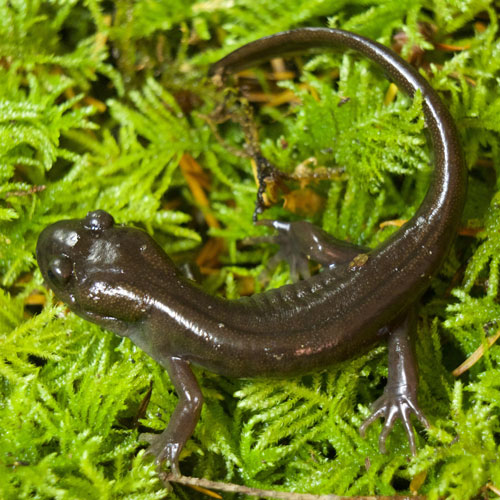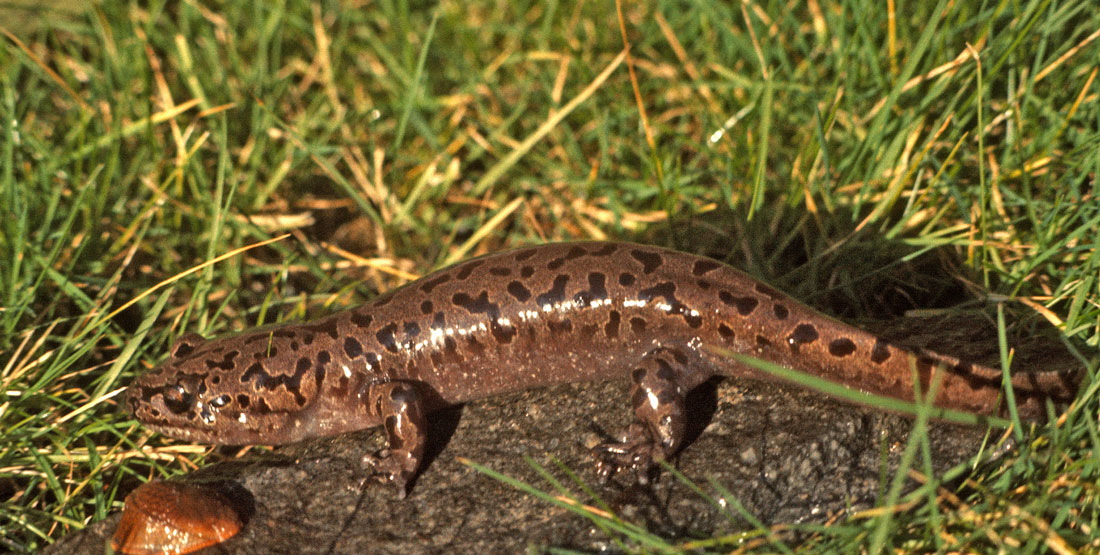Fast Facts
Where they live
- View a map of where they live.
- Coast Giant Salamanders are only found in the Pacific Northwest. In Washington State they are found in the Cascade Mountains, the Willapa Hills of southwestern Washington, Long Island
- Prefer clear, cold mountain streams next to forests or in mountain lakes and ponds.
- During the day they stay underground or under rocks in the streams, but come out in the evenings onto the stream bottom.
- Some terrestrial forms will move out of the stream and stay in the forest undergrowth near water sources.
Breeding
- Eggs are laid one at a time under rocks and logs in slower moving parts of streams usually during May.
- The female protects eggs.
- Larvae take 18-24 months to go through metamorphosis.
Cool Biology Facts
- Metamorphose into terrestrial adults, but sometimes mature and reproduce in the aquatic form. This is called paedomorphosis or neoteny.
- Marbled pattern is usually the easiest way to identify them, although the larvae form are easily mixed up with the Cope’s Giant Salamander.
Threats
- Main threats include habitat loss and habitat changes from logging. View their status on the IUCN Red List of Threatened Species.

Amphibians & Reptiles of Washington
Do you know where rattlesnakes live in our state? Or which salamander breathes through its skin? Explore the fascinating diversity of the 26 species of amphibians and 28 reptiles found in Washington state.

